1800 Calorie Meal Plan High Protein: The Science-Backed Strategy That Actually Works (And Why Most People Get It Wrong)
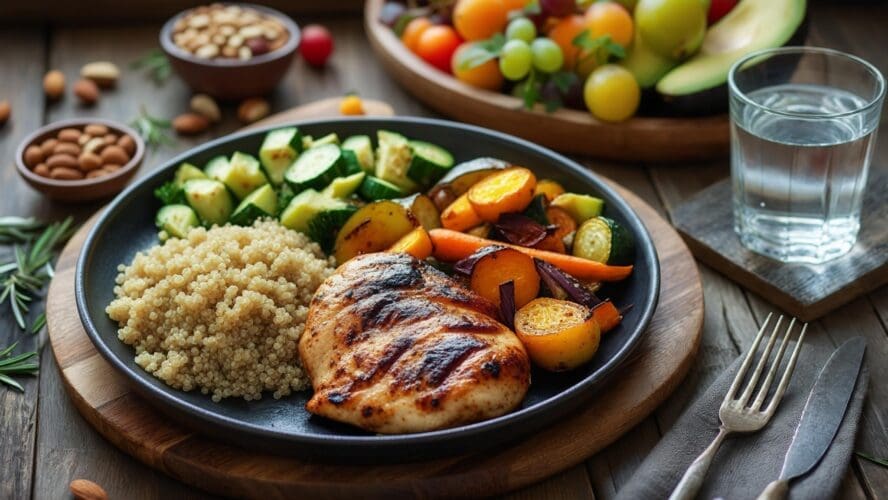
Look, I used to think I had protein figured out. Eat chicken, drink a shake, hit my numbers – done, right? But after months of feeling tired and not seeing the results I wanted, I started digging deeper and realized I was missing some pretty important stuff. It’s not just about grams of protein – there’s this whole timing thing, quality matters way more than I thought, and your body actually processes everything differently throughout the day. Research shows that a sample high-protein meal plan can deliver daily averages of 1765 calories, 137g protein, 78g fat, and 146g carbs, which honestly made me realize I’d been winging it this whole time.
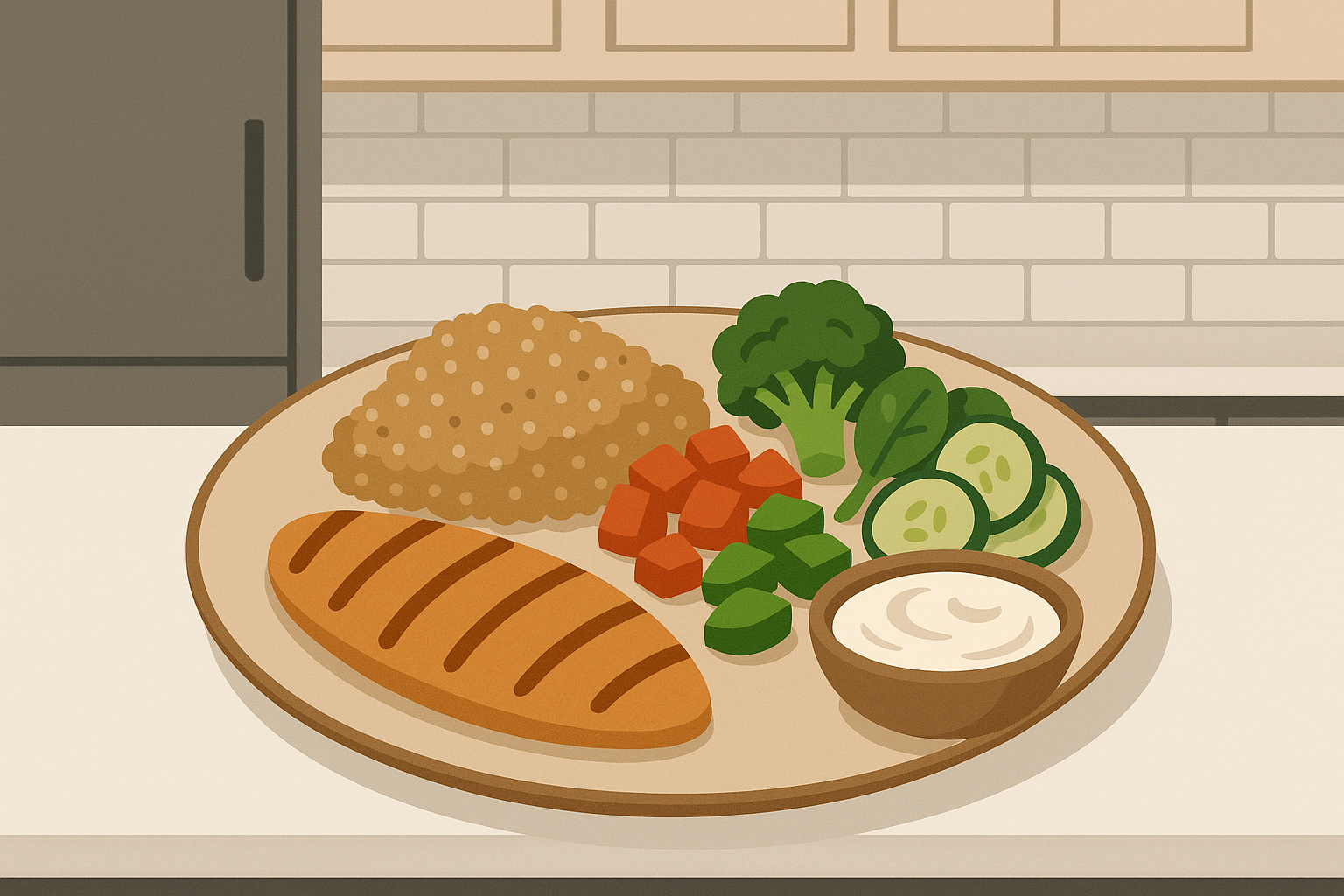
Understanding how protein works alongside other macronutrients like fiber turned out to be way more important than I expected for actually making this work.
Table of Contents
- The Real Deal Behind Protein Timing (Not What You Think)
- Why Your Body Burns More Calories Than You Realize
- Getting All Your Nutrients Without Going Over 1800 Calories
- Making It Work in Real Life (The Stuff Nobody Talks About)
- Scaling Up: When 2000 Calories Makes More Sense
- Troubleshooting When Things Go Wrong
TL;DR
- Your body has specific windows when it’s basically screaming “feed me protein!” – morning and evening are game-changers
- Protein burns way more calories just to digest, and you can actually boost this effect
- Switching up your protein sources every few days keeps your body from getting lazy with digestion
- The real challenge isn’t hitting protein goals – it’s getting enough vitamins and minerals in just 1800 calories
- How you think about meal prep matters more than perfect macros for actually sticking with this
- Your progress might not show on the scale, but your body is definitely changing
The Real Deal Behind Protein Timing (Not What You Think)
I’ll be honest – I used to think protein timing was just gym bro science. Like, protein is protein, right? Turns out your body actually runs on this 24-hour protein clock, and there are specific windows when your muscles are practically begging for amino acids. Missing these can make or break your results, and I learned this the hard way.
Your muscle-building machinery doesn’t work the same way all day long. There’s actually this biological rhythm that determines when your body is primed to build muscle versus when it’s just kind of coasting. Most meal plans completely ignore this, which explains why some people see amazing results while others struggle despite eating the exact same amount of protein.
When you’re working within an 1800 calorie framework, every single meal needs to count. You literally can’t afford to waste protein during low-efficiency periods or miss those high-impact windows.
Your Body’s Hidden Protein Schedule
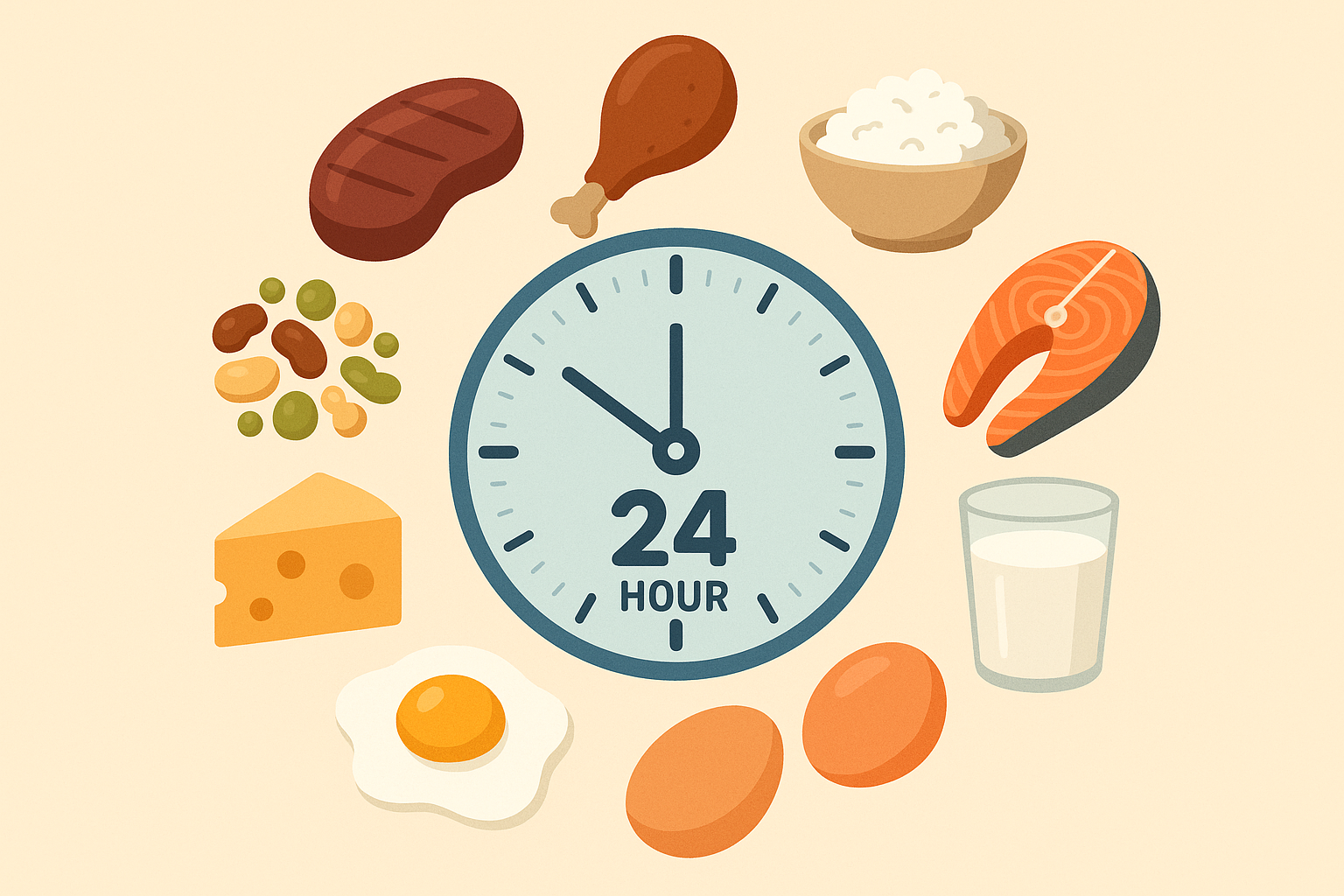
| Time Window | Optimal Protein Amount | Best Protein Sources | Why It Matters |
|---|---|---|---|
| Morning (First 2-3 hours) | 25-35g complete amino acids | Eggs, Greek yogurt, protein powder | Switches body from breakdown to building mode |
| Pre-workout (30-60 min) | 15-20g fast-digesting | Whey protein, BCAAs | Prevents muscle breakdown during exercise |
| Post-workout (30-90 min) | 25-40g complete protein | Chicken, fish, protein shake | Peak muscle protein synthesis window |
| Evening (3-4 hours before bed) | 20-30g slow-digesting | Casein, cottage cheese, Greek yogurt | Fuels overnight muscle repair |
The Morning Protein Power Hour
Those first 2-3 hours after you wake up? Your body is in full-on protein-hungry mode. I’m talking 25-35 grams of complete amino acids to flip the switch from “let’s break down muscle for energy” to “let’s actually build some.” Skip this window, and you’re basically starting your day in muscle breakdown mode – definitely not what we want on an 1800 calorie meal plan.
Morning Protein Options That Don’t Suck:
- 3 scrambled eggs (18g protein) + 1 slice whole wheat toast – quick, filling, actually tastes good
- Greek yogurt (20g protein) + mixed berries + 1 tbsp almond butter – feels like dessert for breakfast
- Protein smoothie: 1 scoop whey (25g) + banana + spinach + almond milk – for when you’re running late
- Total calories: 350-400, Protein: 25-35g
Evening Recovery Magic
Here’s what blew my mind – the 3-4 hours before bed are just as crucial as morning. Your body needs 20-30 grams of slow-digesting protein to fuel overnight muscle repair. Think about it – you’re about to go 8+ hours without eating, and without proper protein, your muscles are basically eating themselves while you sleep. Not exactly the goal here.
Similar to how intermittent fasting requires strategic timing, protein distribution throughout the day follows these specific biological rhythms that can make or break your results.
The Amino Acid Puzzle Most People Never Solve
Within those tight 1800 calories, you can’t just throw random proteins together and hope for the best. Certain amino acid combinations create this multiplying effect that makes your protein work way harder. I nerded out on this stuff way more than I expected to.
The Leucine Trigger Point
There’s this magic ratio I discovered – 2.5-3 grams of leucine per 25 grams of total protein. This literally flips the metabolic switch that tells your body “hey, let’s start building muscle.” Getting this ratio right within your calorie limits requires some strategic food pairing, but it’s honestly a game-changer once you figure it out.
The Supporting Cast Nobody Talks About
While everyone obsesses over essential amino acids, there are these other guys – glycine, alanine, and glutamine – working behind the scenes making everything else work better. They help your body actually use those essential amino acids while keeping your gut healthy and immune system strong. They’re like the unsung heroes of protein metabolism.
Why I Rotate My Protein Sources Every Few Days
Your body gets lazy when you eat the same proteins over and over. I learned this when I got stuck in a chicken-and-eggs rut and suddenly felt like garbage despite hitting all my numbers. Now I cycle between animal, plant, and marine proteins every 2-3 days to prevent this “amino acid adaptation.” Plus, each source brings different micronutrients that support protein metabolism – it’s like giving your body a variety pack instead of the same meal every day.
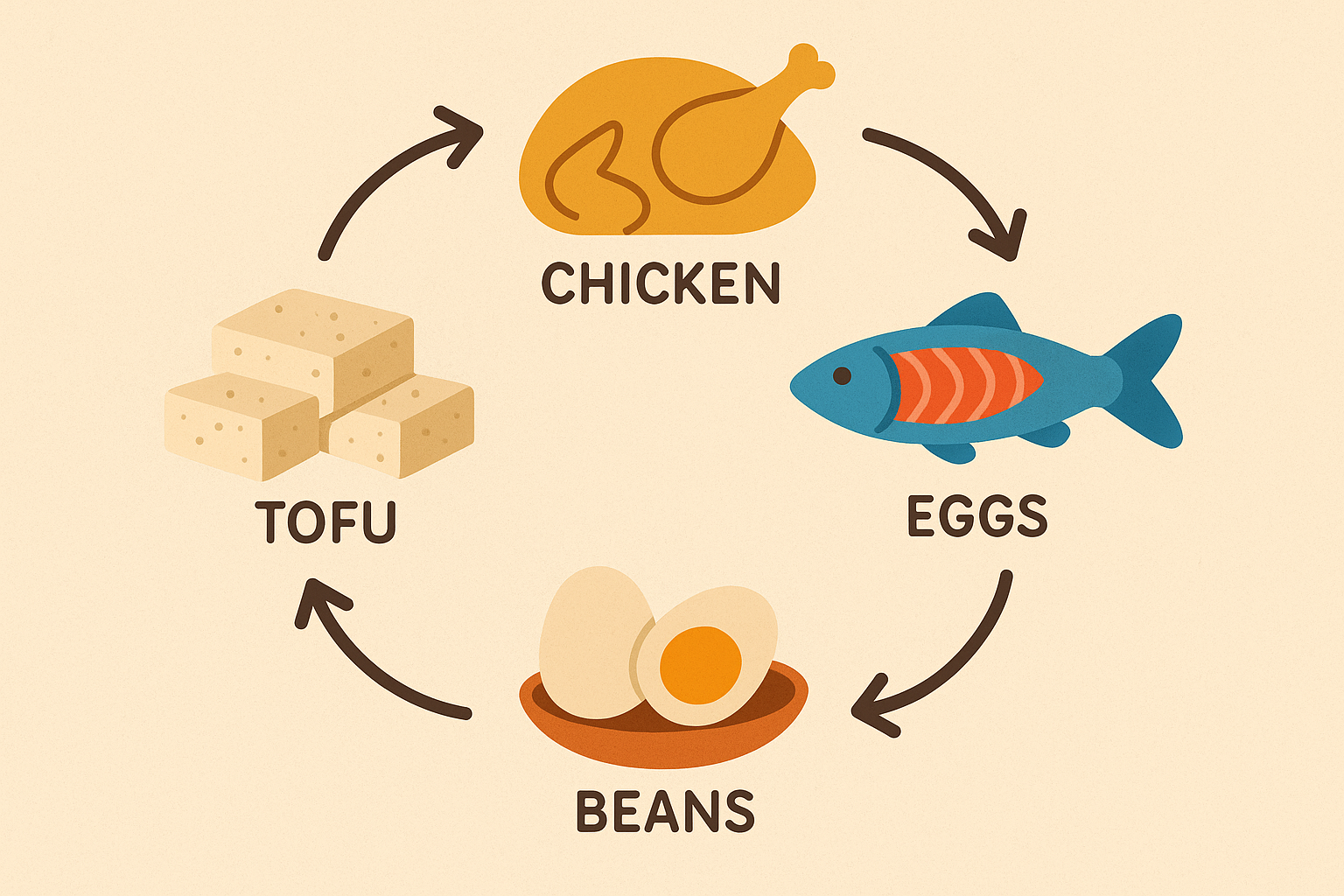
Making Your Digestive System Work With You
Here’s something most high-protein guides completely miss – your digestive system’s ability to handle protein changes based on gut health, enzyme production, and what else you’re eating. I’ve seen people (including myself) fail on high-protein plans because their body literally couldn’t process what they were eating.
Just like improving digestion helps reduce bloating, optimizing your digestive capacity is essential for actually using all that protein you’re eating.
Keeping Your Digestive Enzymes Sharp
When you eat the same proteins at the same times every day, your digestive enzymes get complacent. It’s like they’re on autopilot. Rotating protein sources and meal timing keeps your enzyme production active and prevents that sluggish, bloated feeling that comes with monotonous high-protein diets.
This becomes even more critical when you’re following an 1800 calorie meal plan where every single nutrient needs to be absorbed efficiently. You can’t afford to waste anything.
Why Your Body Burns More Calories Than You Realize
The thermic effect of protein is real – your body burns 20-30% of protein calories just digesting them. But here’s what most people don’t know: you can actually amplify this effect through strategic timing and food combinations. I’ve found ways to turn my body into a more efficient calorie-burning machine without adding extra exercise. Studies confirm that your body burns more calories digesting protein than fats or carbs, making a high-protein diet a natural metabolism booster.
Turning Up Your Metabolic Furnace
Protein’s natural calorie-burning effect isn’t fixed – it changes based on when you eat, what you eat with it, and how metabolically flexible you are. Understanding these variables has helped me maximize the fat-burning potential of every protein meal within my 1800-calorie framework.
The Post-Workout Metabolic Window
That 30-90 minute window after resistance training? Your body becomes this metabolic furnace where protein’s thermal effect jumps by 15-25%. This is hands-down the most calorie-efficient time to eat protein. I’ve restructured my entire meal timing around this discovery, and the difference is noticeable.
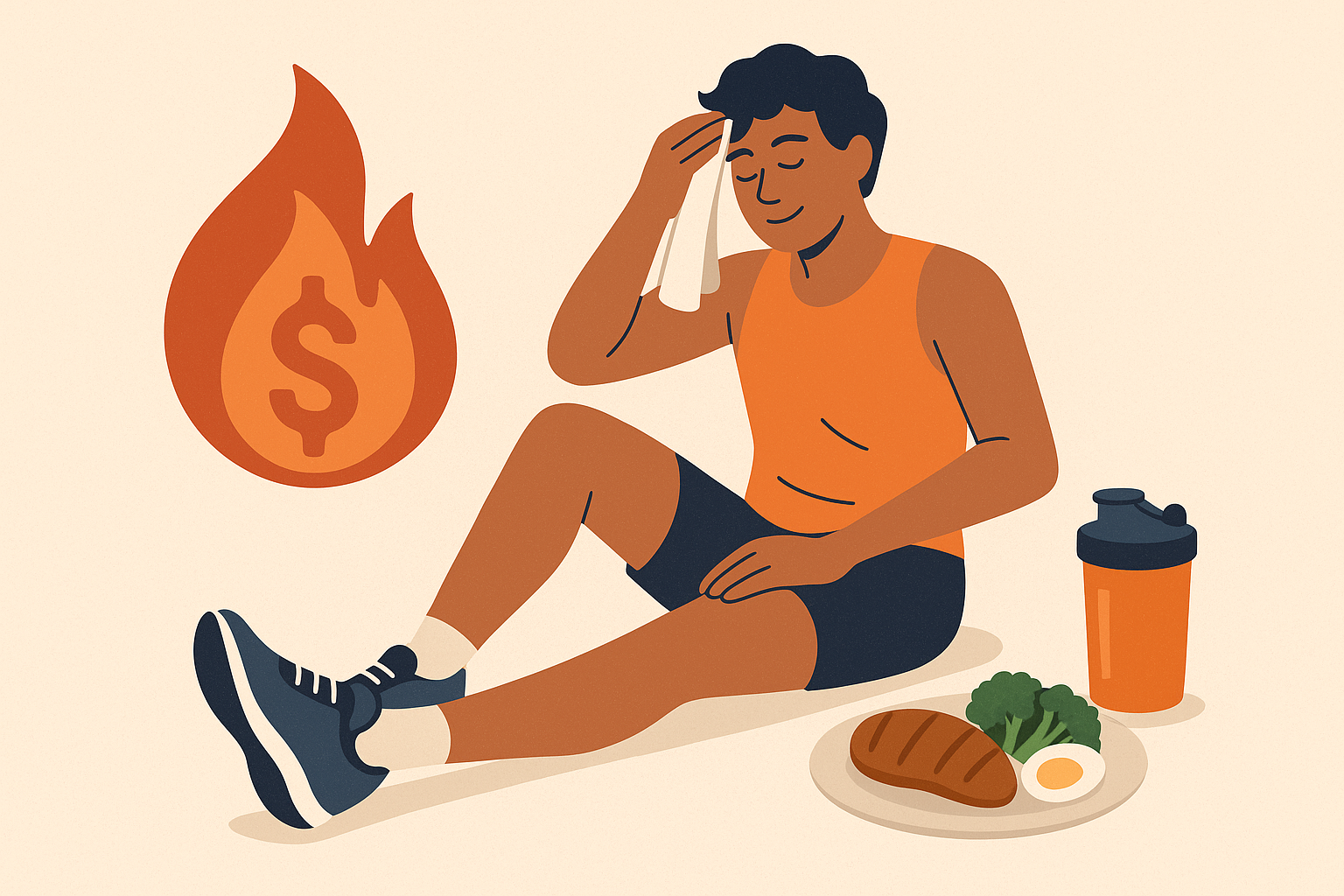
Where Your Calories Actually Go
Within 1800 calories, every single calorie needs a job. Strategic macronutrient ratios determine whether those calories build muscle, get stored as fat, or fuel metabolic processes. Getting this balance right is what separates successful high-protein plans from ones that just make you feel restricted and cranky.
Making Your Body Choose Muscle Over Fat Storage
Pairing protein with specific types of fiber and resistant starches creates this metabolic environment where your body preferentially sends nutrients to muscle tissue instead of fat cells. It’s about insulin sensitivity optimization – basically training your body to make better decisions with the calories you give it.
Activating Your Body’s Hidden Calorie Burner
Brown fat activation sounds fancy, but it’s actually achievable through specific protein sources combined with temperature exposure and meal timing. This creates additional calorie burn beyond the standard thermic effect – essentially giving you bonus metabolism points.
Understanding how to increase brown fat production can significantly enhance the metabolic benefits of your high-protein approach.
Getting All Your Nutrients Without Going Over 1800 Calories
The biggest challenge with 1800-calorie high-protein plans isn’t hitting your protein target – it’s making sure you don’t end up with nutritional gaps while staying within your calorie limit. Every food choice has to pull double or triple duty, providing protein while delivering the vitamins and minerals your body needs to actually use that protein effectively. Research shows that you aim for around 150 grams of protein daily, which is roughly 30-40% of your total caloric intake, translating to about 600-700 calories from protein.
Making Every Calorie Count Double
In a restricted calorie plan, you can’t afford foods that only do one job. I’ve developed this system where every food choice serves multiple nutritional purposes. It requires understanding nutrient density and bioavailability, but it’s honestly the difference between thriving and just surviving on 1800 calories.
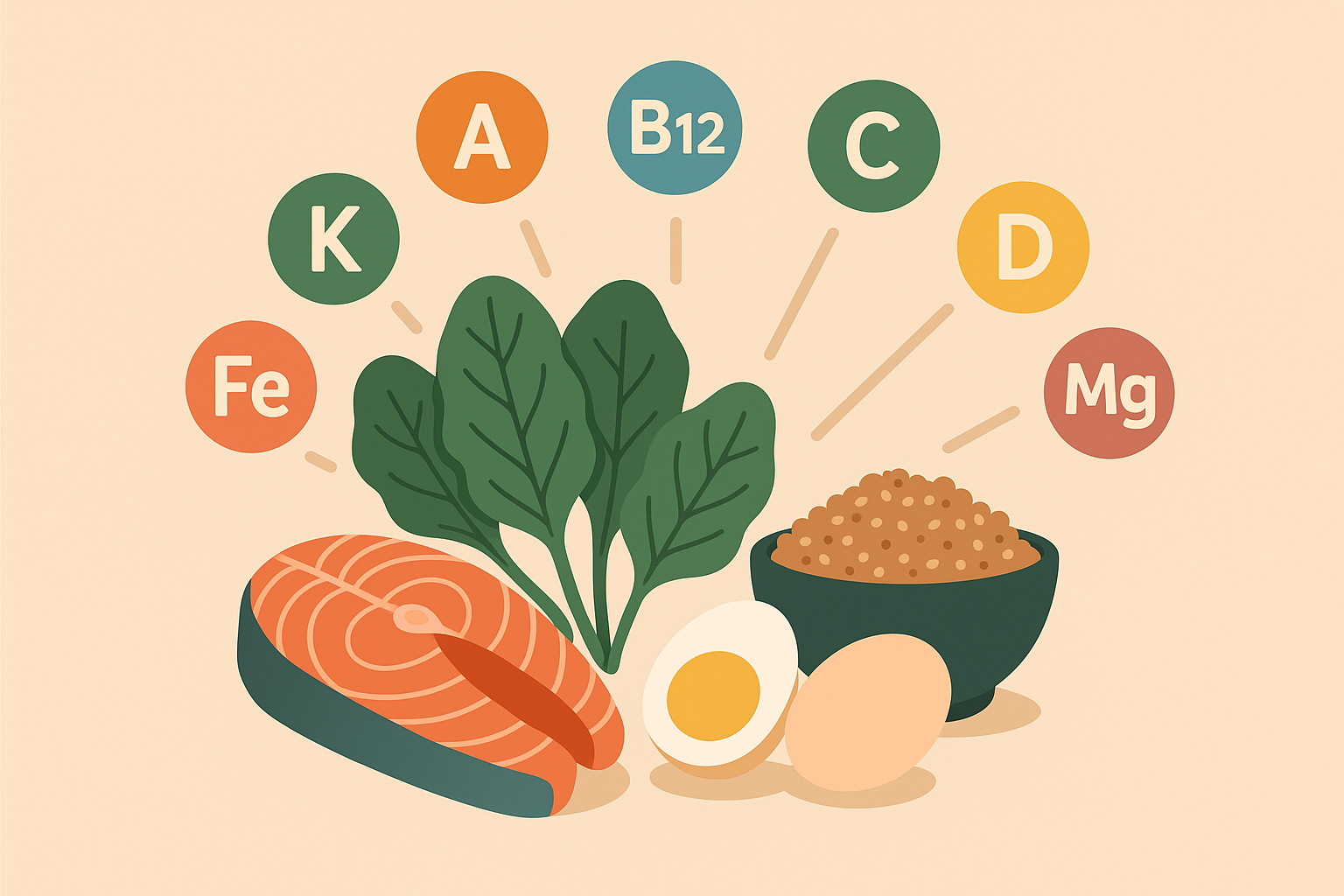
| Food Category | Protein per Serving | Key Micronutrients | Calories | Multi-Purpose Benefits |
|---|---|---|---|---|
| Organ meats (3oz) | 25-30g | B12, Iron, Zinc, Folate | 150-200 | Complete amino acids + hard-to-get vitamins |
| Shellfish (4oz) | 20-25g | Zinc, Selenium, B12, Iodine | 120-160 | Lean protein + thyroid support |
| Sardines (3oz) | 22g | Omega-3, Calcium, B12 | 185 | Anti-inflammatory + bone health |
| Greek yogurt (1 cup) | 20-25g | Calcium, Probiotics, B12 | 130-150 | Gut health + muscle building |
| Hemp seeds (3 tbsp) | 10g | Magnesium, Iron, Omega-3 | 170 | Plant protein + essential fatty acids |
The Protein-Micronutrient Power Couples
Organ meats, shellfish, and certain plant proteins are nutritional powerhouses that deliver exceptional amino acid profiles while providing hard-to-get micronutrients. B12, zinc, and iron support protein metabolism while filling nutritional gaps that plague most high-protein approaches. Yeah, organ meats sound weird, but they’re basically nature’s multivitamin.
Fighting Inflammation While Building Muscle
Wild-caught fish, grass-fed meats, and specific plant proteins don’t just provide amino acids – they deliver omega-3 fatty acids and polyphenols that reduce the inflammatory burden of high protein intake. This is crucial because inflammation can actually interfere with protein synthesis. It’s like trying to build a house while someone’s setting small fires everywhere.
Keeping Your Gut Happy on High Protein
High-protein diets can wreck your gut health if you’re not careful. I learned this lesson when I spent two weeks feeling like I’d swallowed a brick after every meal. Incorporating prebiotic fibers, digestive enzymes, and gut-healing nutrients isn’t optional – it’s essential for actually absorbing and using all that protein you’re eating.
Feeding Your Gut Bacteria
Your gut bacteria play a huge role in protein digestion and absorption. Fermented protein sources and resistant starches keep these beneficial bacteria happy and working efficiently. Without a healthy gut microbiome, even the best 1800 calorie meal plan falls flat.
Gut-Friendly High-Protein Meal Checklist:
- Include fermented dairy (kefir, Greek yogurt) or plant-based alternatives
- Add prebiotic fiber sources (garlic, onions, asparagus) to protein meals
- Pair protein with digestive enzymes or enzyme-rich foods (pineapple, papaya)
- Include bone broth or collagen peptides for gut lining support
- Space protein meals 3-4 hours apart for optimal digestion
Similar to how drinking vinegars support gut health, maintaining optimal digestive function is crucial for maximizing protein absorption and utilization.
Making It Work in Real Life (The Stuff Nobody Talks About)
Okay, let’s get real for a second. You can have the most perfect meal plan on paper, but if it doesn’t survive your actual life – you know, the one with work deadlines, kids having meltdowns, and that friend who always wants to grab drinks – then it’s basically useless.
I learned this the hard way when I spent three hours on a Sunday making these elaborate protein-packed meals, only to realize I had zero time to actually eat them during my crazy Tuesday. That’s when it hit me: the psychology of sticking to a plan matters way more than having perfect macros.
The Psychology of Meal Prep Success
Here’s what nobody tells you about meal prep – it’s not really about the cooking. It’s about understanding why you’ll want to quit and building your defense against those moments. Because trust me, those moments will come.
You know that feeling when you’re exhausted after a long day, staring into your fridge, and suddenly that perfectly portioned chicken and broccoli looks about as appealing as cardboard? Yeah, that’s when most people order takeout and feel guilty about it. But what if I told you there’s a way to plan for exactly those moments?
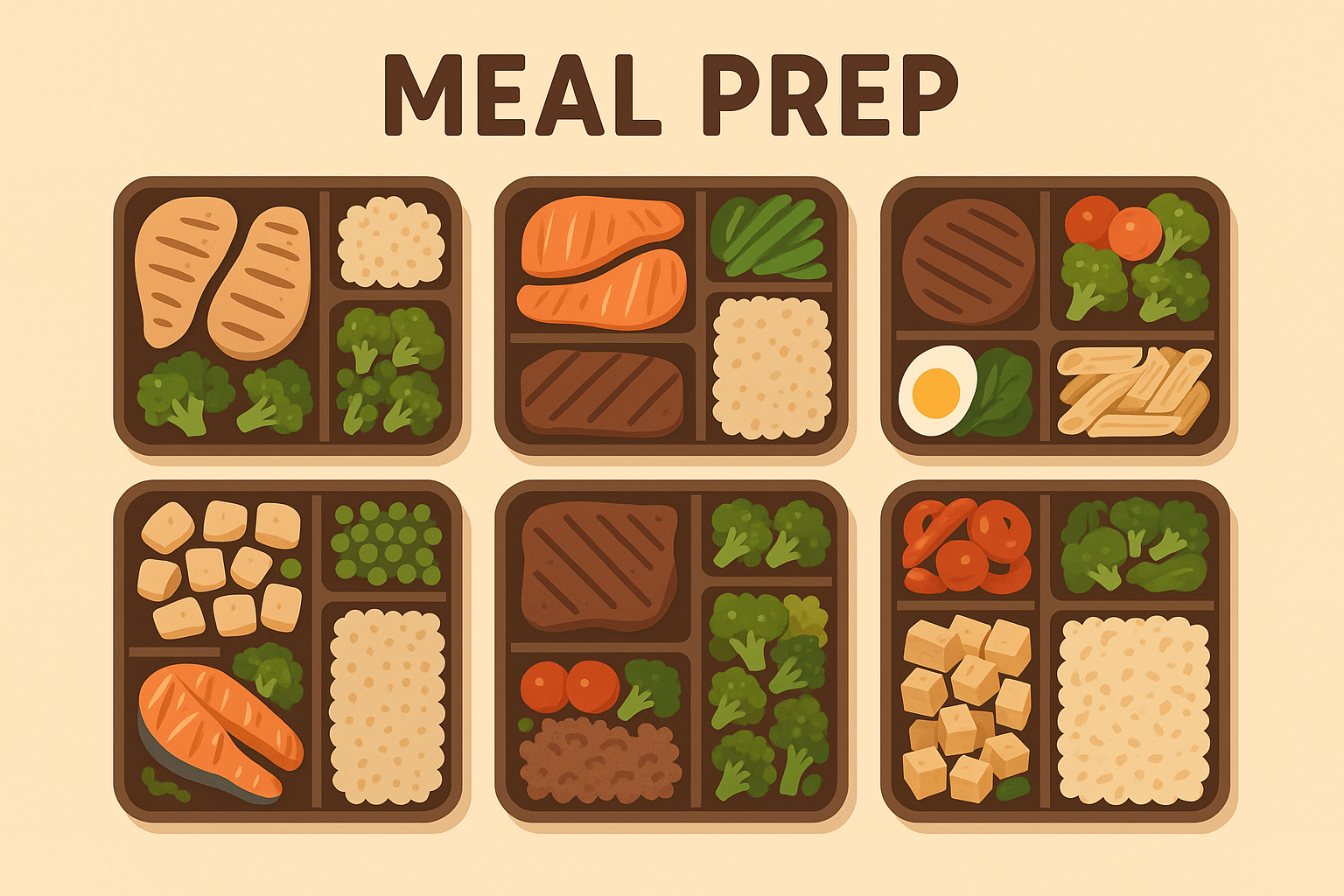
My “I Don’t Want to Adult Today” Protein System
I’ve got three levels of protein options based on how much energy I have. Because some days you’re Martha Stewart, and other days you can barely microwave water without burning something.
Level 1 – Zero Energy Days: Grab and go stuff that requires literally no thinking. Hard-boiled eggs I made when I actually had motivation, Greek yogurt cups, those protein bars that don’t taste like cardboard (yes, they exist), or even just good old deli turkey rolled up with some cheese. Is it Instagram-worthy? Nope. Does it keep me on track? Absolutely.
Level 2 – Slightly Functional Days: Five minutes max. Protein shake while I’m getting ready, cottage cheese with whatever fruit is about to go bad, or tuna straight from the can (don’t judge). Sometimes I’ll crack an egg into my ramen because, hey, that’s still protein, right?
Level 3 – I’m Actually an Adult Today: This is when I can handle 15 minutes of actual cooking. Scrambled eggs, throwing some chicken in a pan, or making that stir-fry I’ve been meaning to try.
The magic isn’t in being perfect – it’s in always having options that match your current energy level.
Staying Social Without Becoming “That Person”
Look, I love my friends, but I also love not feeling like garbage after every social meal. The trick is learning to navigate restaurants and social situations without being the person who brings Tupperware to the party (though honestly, if that works for you, own it).
Most restaurants have at least one decent protein option. I’ve gotten pretty good at scanning menus for grilled stuff, seafood, or anything with eggs. And here’s a secret – most places will swap fries for a side salad or veggies if you just ask nicely. Revolutionary, I know.
The real game-changer was realizing I don’t have to be perfect every single meal. If I’ve been solid with my protein all week and want to enjoy pizza with friends on Friday night, the world won’t end. It’s about the big picture, not obsessing over every single bite.
When the Scale Lies to Your Face
Can we talk about how frustrating the scale can be? You’re doing everything right, hitting your protein goals, feeling stronger, and then you step on that little metal liar and it hasn’t budged. Or worse, it went up.
Here’s what I wish someone had told me earlier: high-protein diets often make your body composition change before your weight changes. You might be building muscle and losing fat at the same time, which means the scale stays the same while you’re actually getting leaner and stronger.
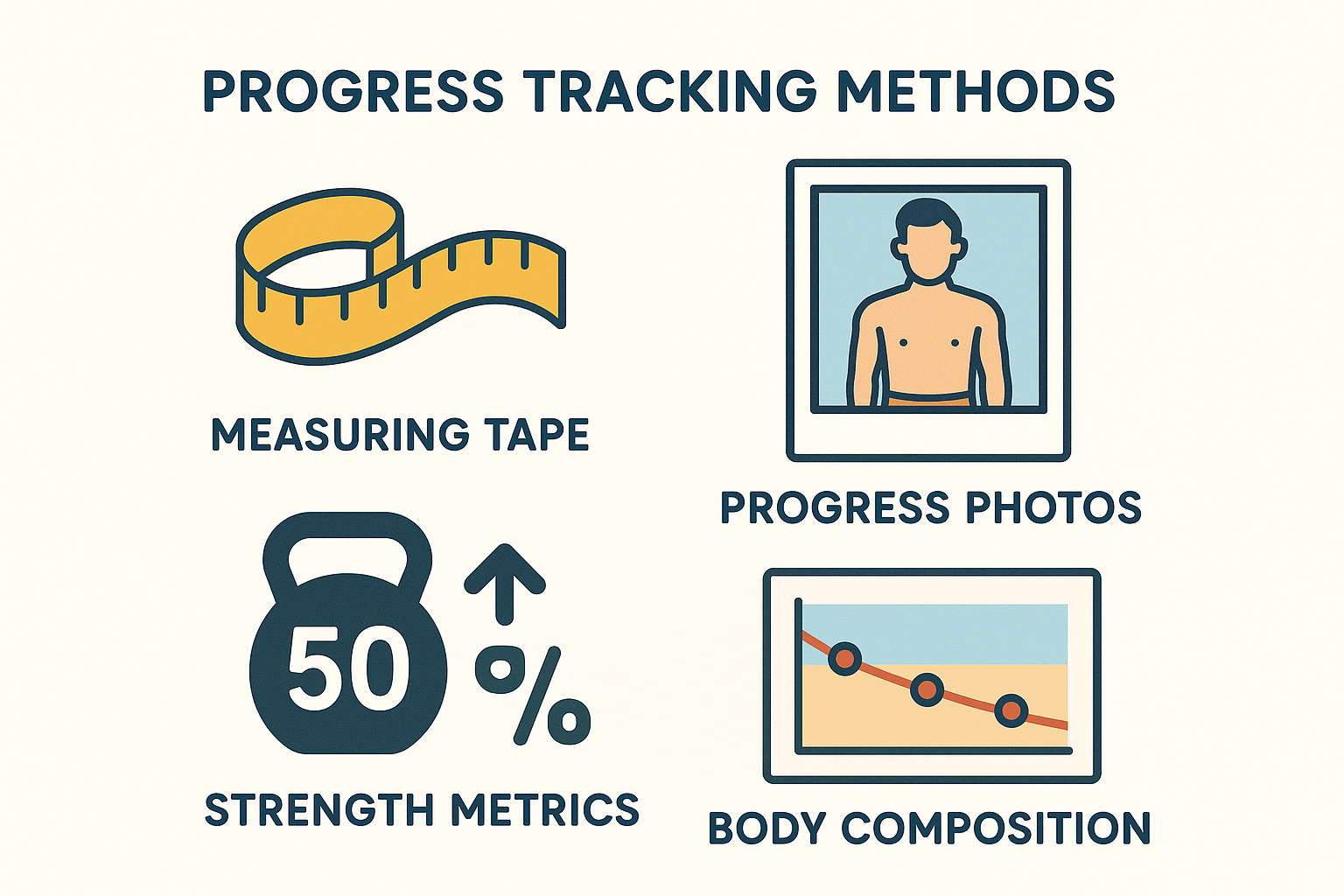
What Your Scale Isn’t Telling You
Body composition changes happen before weight changes, especially on high-protein plans. Using multiple assessment methods gives you a clearer picture of what’s actually happening in your body and prevents the frustration that comes from scale obsession.
I started taking progress photos every couple weeks (same pose, same lighting, same time of day) and measuring my waist, arms, and thighs. That’s where I actually saw changes happening, even when the scale was being stubborn.
My Weekly Reality Check:
- Monday Morning: Step on the scale, but don’t let it ruin my day
- Wednesday: Take measurements and actually pay attention to how my clothes fit
- Friday: Progress photos (I know, I know, but they don’t lie)
- Sunday: Honest check-in with myself about energy levels, sleep, and how I’m actually feeling
The scale is just one tiny piece of data. How you feel, how you sleep, whether you can carry your groceries without dying – that stuff matters way more.
Just as intuitive eating focuses on internal cues rather than external rules, successful meal plan adherence requires listening to your body’s feedback beyond just the scale.
Scaling Up: When 2000 Calories Makes More Sense
Sometimes 1800 calories just isn’t cutting it. Maybe you started working out more, maybe you’re taller than average, or maybe you tried 1800 for a while and felt like you were running on empty. That’s totally normal, and knowing when and how to bump up to 2000 calorie meal plan can save you from feeling miserable.
How to Add Calories Without Screwing Everything Up
Those extra 200 calories aren’t a free-for-all pass to add whatever you want. I mean, you could use them on half a donut, but that’s probably not going to help your energy levels or muscle-building goals.
I think of those extra 200 calories as having a job to do. Are you training harder and need more fuel around your workouts? Are you not recovering well and need more overall nutrition? Are you just hungry all the time and need more food to function like a normal human? The answer determines where those calories go.
Smart Ways to Use Your Extra 200 Calories
If you’re training harder: Split them around your workouts. Maybe a banana with almond butter before, and a protein shake after. Your muscles will actually use those calories instead of just storing them.
If you’re always hungry: Add them to your biggest meal of the day with more protein and some healthy fats. An extra ounce of chicken and half an avocado can make a huge difference in how satisfied you feel.
If you’re not recovering well: Use them for better sleep and stress management. Maybe that’s a magnesium supplement and some tart cherry juice before bed, or just more overall food so your body isn’t stressed about being underfed.
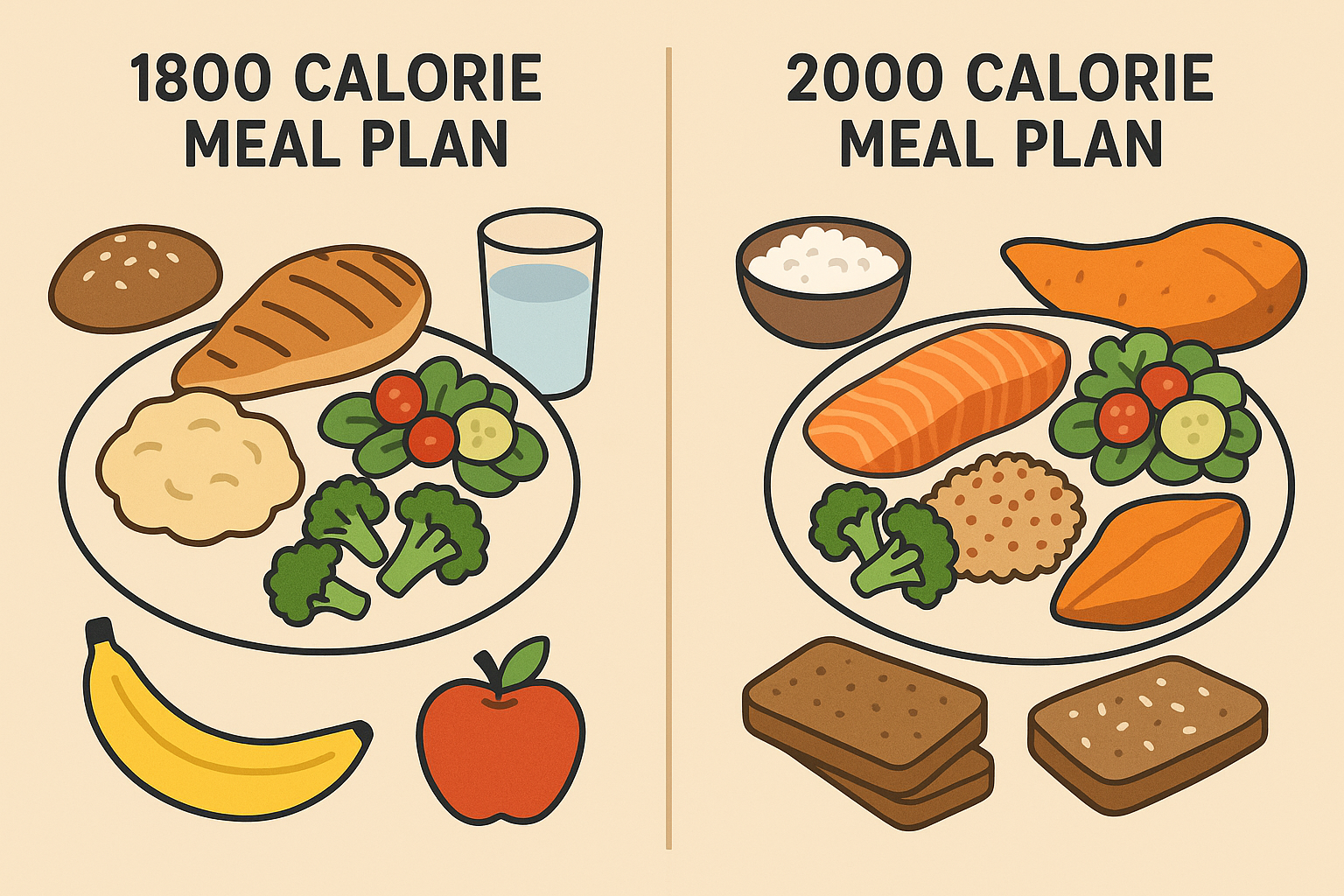
Maintenance vs. Actually Trying to Build Muscle
Here’s something that took me way too long to figure out: there’s a difference between eating enough to maintain what you have and eating enough to actually build new muscle. If you’re lifting weights and trying to get stronger, 1800 calories might just be keeping you from losing what you already have.
Moving up to 2000 calories often represents the difference between “not losing muscle” and “actually building muscle.” And if you’re putting in the work at the gym, you might as well give your body enough fuel to show for it.
Strategic Calorie Timing for Muscle Growth
I’ve found that using the additional 200 calories around workouts (pre and post) maximizes muscle protein synthesis while minimizing fat gain. It’s about feeding the muscle-building process when it’s most active, not just eating more food throughout the day.
Troubleshooting When Things Go Wrong
Let’s be honest – sometimes things just don’t work the way they’re supposed to. You’re following the plan, hitting your protein goals, and… nothing. Or worse, you feel terrible. This is when most people either give up or start doing weird extreme things that make everything worse.
When Progress Stalls and You Want to Throw Your Food Scale Out the Window
I’ve been there. Week after week of doing everything “right” and feeling like you’re spinning your wheels. It’s frustrating as hell, and it’s usually not because you need to eat more or less protein. Most of the time, your body just got comfortable with your routine and needs you to shake things up.
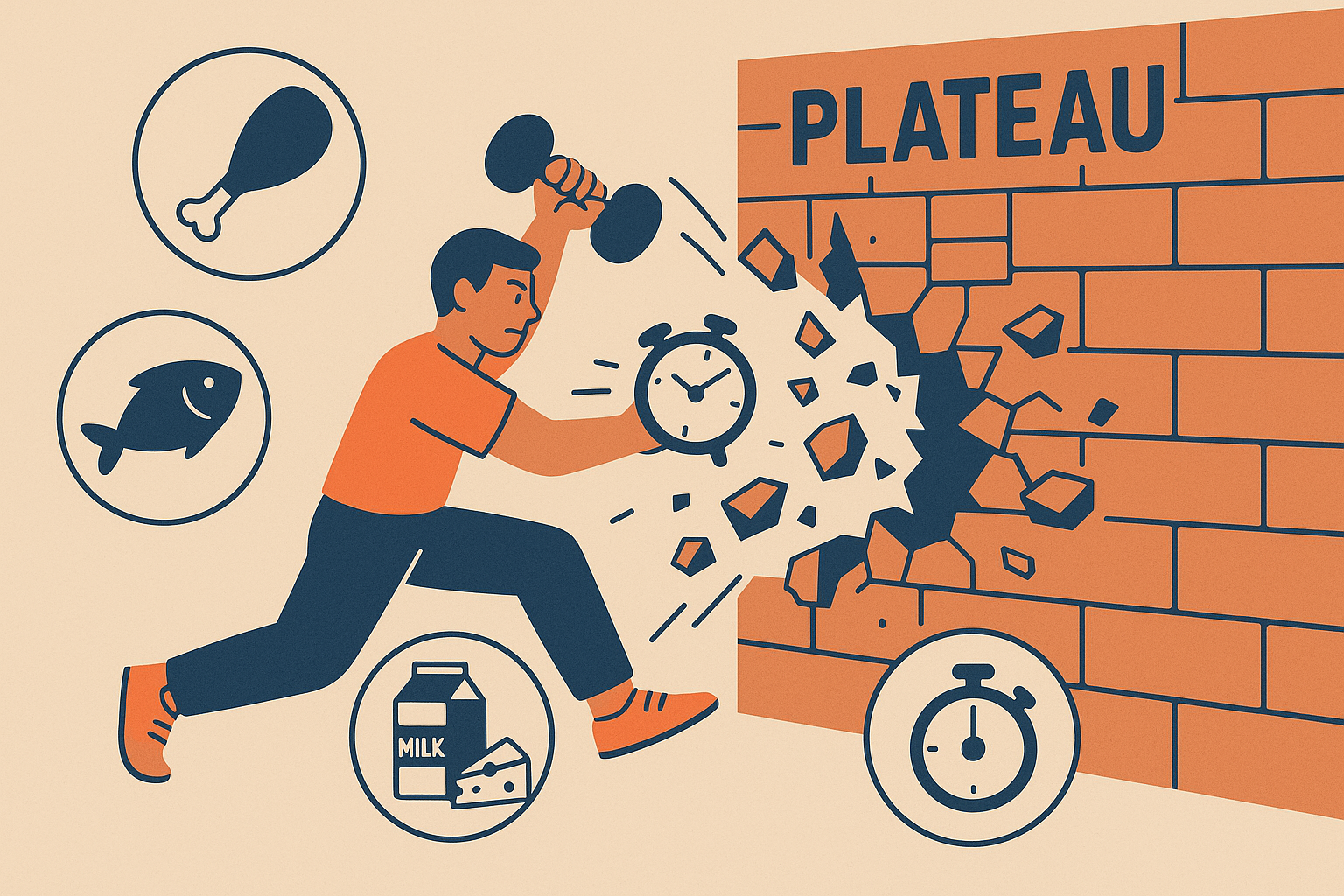
My “Nothing’s Working” Troubleshooting Game Plan
First, I take a step back and look at the big picture. Am I actually following the plan, or am I just telling myself I am? Sometimes we have selective memory about that handful of nuts here and that “small” piece of cake there.
If I’m honestly sticking to the plan, then I start rotating my protein sources more aggressively. Instead of chicken and eggs every day, I’ll spend a week focusing on fish and Greek yogurt, then switch to plant proteins for a while. Your body can get lazy when it knows exactly what’s coming.
My Plateau-Busting Rotation:
- Week 1-2: Focus on poultry and eggs
- Week 3-4: Emphasize fish and seafood
- Week 5-6: Go heavy on dairy proteins
- Week 7-8: Mix in more plant-based options
- Then start over with tweaks based on what felt best
When Your Gut Decides to Revolt
High-protein eating can be rough on your digestive system, especially if you went from eating mostly carbs to suddenly pounding protein shakes. If you’re feeling bloated, uncomfortable, or just generally gross, your gut might need some help processing all this protein.
I learned this one the hard way after a week of feeling like I’d swallowed a brick after every meal. Sometimes you need to dial back the intensity and give your digestive system a chance to catch up.
Taking a few days to focus on easier-to-digest proteins like bone broth, collagen peptides, or just smaller portions can reset things. It’s not giving up – it’s strategic recovery.
Reading Your Body’s “Please Stop” Signals
Your body is pretty good at telling you when something isn’t working, but we’re often pretty bad at listening. I’ve learned to pay attention to specific signals that tell me when my protein approach needs adjusting.
Good signs I’m on track:
- Sleeping well and waking up with decent energy
- Not constantly thinking about food
- Workouts feel strong, recovery feels normal
- Generally in a good mood (not hangry all the time)
Warning signs something needs to change:
- Constantly tired even with enough sleep
- Digestive issues that won’t go away
- Obsessing over food or feeling anxious about meals
- Workouts start feeling harder for no reason
Time to make changes:
- Any digestive problems lasting more than a week
- No progress for a month despite consistent effort
- Feeling worse instead of better after a few weeks
Understanding how to activate autophagy can help reset your metabolic processes when high-protein plans hit plateaus.
How Organic Authority Can Support Your High -Protein Journey
The sophisticated approach to 1800-calorie high-protein nutrition works even better when supported by high-quality supplements that fill specific gaps. Organic Authority’s marine-sourced collagen fits perfectly into the protein cycling protocols I’ve discussed – its superior bioavailability and unflavored profile makes it easy to integrate into both morning protein priming and evening recovery windows.
Their focus on digestive health supplements aligns perfectly with the gut health emphasis throughout this meal planning approach. Just as their rigorous evaluation process ensures product efficacy, this systematic approach to high-protein nutrition ensures every protein gram serves multiple physiological functions.
Ready to take your high-protein plan to the next level? Check out Organic Authority’s carefully curated supplement collection to support your protein metabolism and digestive health goals.
Similar to how choosing the right collagen supplements requires understanding quality markers, successful high-protein meal planning demands attention to protein source quality and timing.
Final Thoughts
Look, I’m not going to lie to you and say this is always easy. Some days you’ll nail your protein timing perfectly, feel like a nutrition genius, and wonder why everyone doesn’t eat this way. Other days you’ll forget to eat until 2pm, panic about your protein goals, and end up eating a sad desk salad while questioning your life choices.
Both of those days are normal. Both of those days are part of the process.
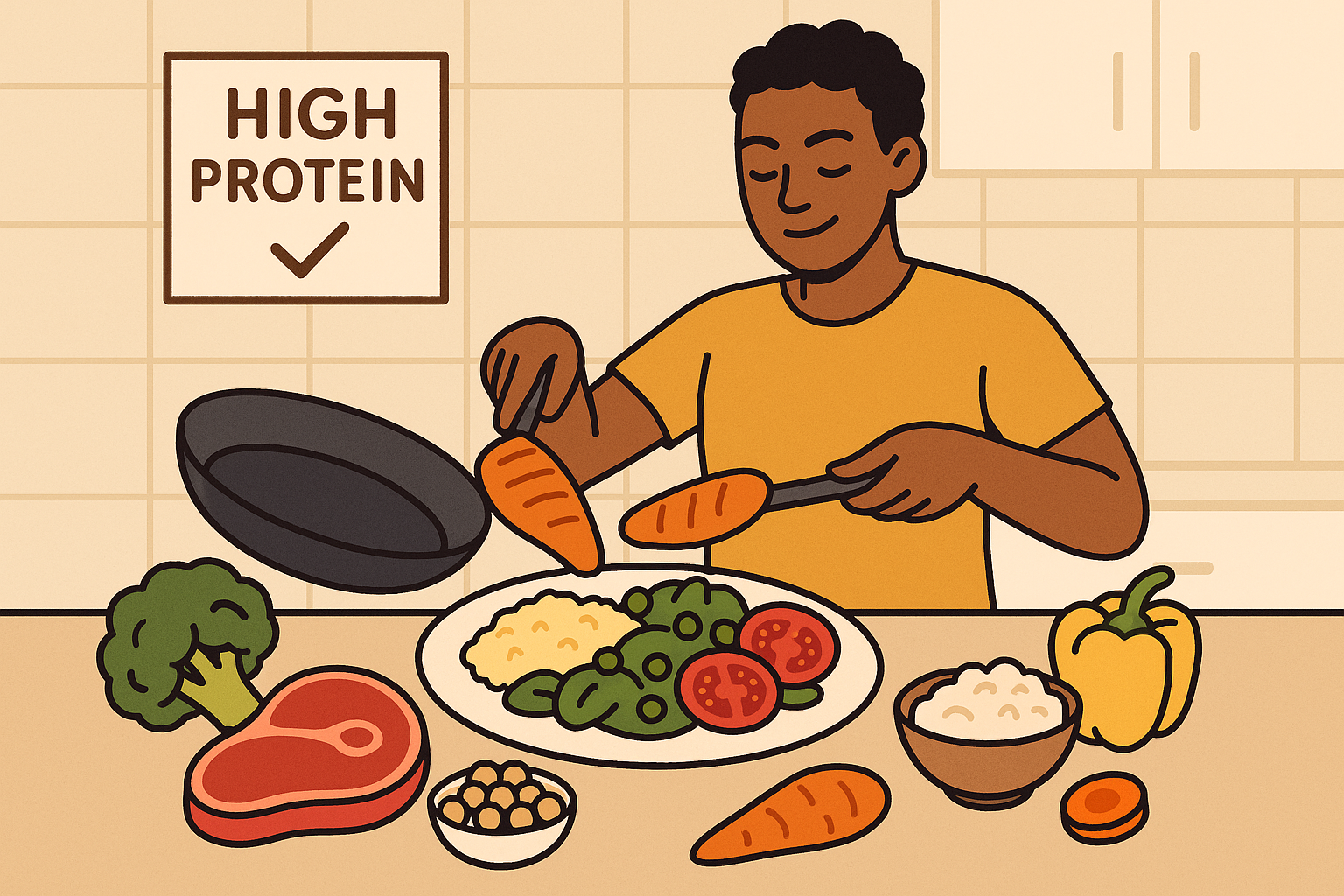
What I’ve learned is that the magic isn’t in being perfect – it’s in being consistent enough that the good days outnumber the rough ones. Your body is way more forgiving than you think, and missing your protein target one day isn’t going to undo weeks of good work.
The science stuff I’ve shared – the timing, the amino acids, the metabolic effects – that’s all real and it can make a difference. But the biggest difference comes from finding an approach you can actually stick with for months, not just weeks.
Some people thrive on precise meal timing and calculated leucine ratios. Others do better with a more flexible “get protein at most meals and don’t stress about the details” approach. Figure out which person you are and work with that, not against it.
Your body composition is changing even when the scale isn’t moving. Your relationship with food is improving even when it doesn’t feel like it. You’re building habits that will serve you long after you’ve stopped thinking about 1800 calorie meal plan frameworks and moved on to whatever comes next in your life.
And honestly? That’s the real victory here. Not perfect macros or ideal protein timing, but creating a sustainable way of eating that makes you feel good and fits into your actual life. Everything else is just details.

